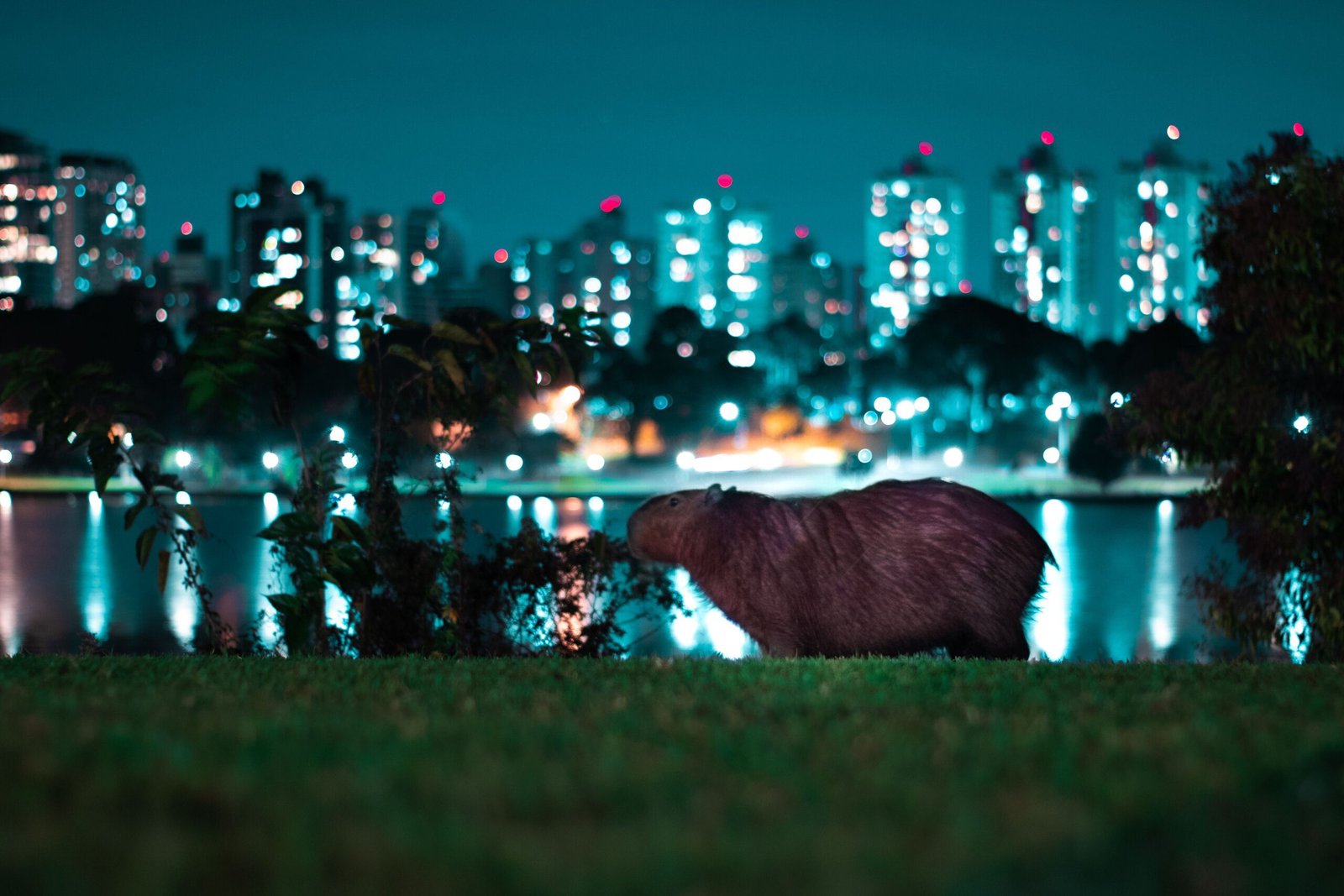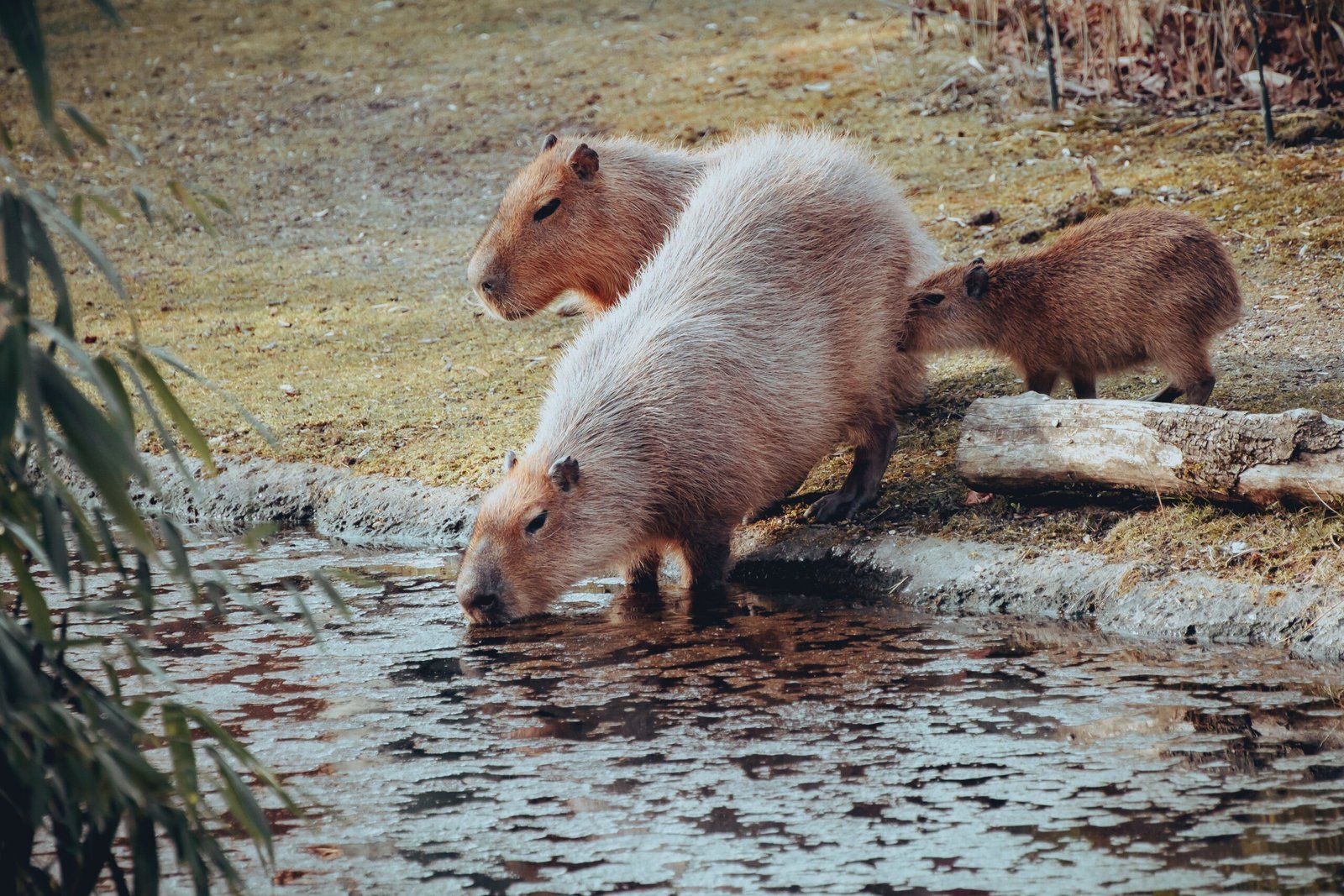Table of Contents
Have you ever marveled at the incredible ways in which animals adapt to their surroundings? Well, get ready to be amazed by the capybaras! These intriguing creatures have truly mastered the art of survival with their unique adaptations. From their aquatic prowess to their social skills, capybaras have a bag of tricks that make them nature’s extraordinary conquerors. Dive into this article to discover the incredible adaptations that allow capybaras to thrive in their environment.

Physical Adaptations
Webbed Feet
One of the remarkable adaptations of capybaras is their webbed feet. This feature allows them to navigate through their semiaquatic habitats with ease. The webbing between their toes enables them to swim swiftly and maneuver effectively in the water, making them agile and efficient swimmers. By using their webbed feet, capybaras can quickly escape from predators, explore new areas in search of food, and find mates.
Semiaquatic Lifestyle
Capybaras have adapted to a semiaquatic lifestyle, wherein they spend a significant amount of time in and around water. This adaptation is crucial in their natural habitat, which primarily consists of wetlands, swamps, and riversides. Their semiaquatic lifestyle allows capybaras to take advantage of the abundant aquatic vegetation available for their herbivorous diet. It also provides them with a safe refuge, as they can rapidly escape into the water when threatened by predators.
Large Size
One of the distinctive characteristics of capybaras is their large size. They are the largest rodents in the world, with an average adult weighing between 77 and 146 pounds. Their substantial size serves as an adaptation in various ways. Firstly, it acts as a deterrent to potential predators, as capybaras are less likely to be targeted by smaller carnivores. Secondly, their large bodies provide insulation, which is beneficial in regulating body temperature in their diverse habitats. Additionally, their size allows capybaras to intimidate rivals and assert dominance in their social structures.
Eyes and Ears Positioning
The positioning of capybara’s eyes and ears contributes to their survival and adaptability. Their eyes are located on the tops of their heads, allowing them to remain partially submerged in the water while keeping their visual awareness above the surface. This adaptation grants them a wider field of view, enhancing their ability to detect predators or other potential threats. Similarly, their ears are also positioned on the top of their heads, enabling them to listen for auditory cues while submerged, ensuring they can respond quickly to danger or other important auditory signals.
Thermal Adaptations
Thick Fur
Capybaras have developed a thick coat of fur as a thermal adaptation. This dense fur serves multiple functions in their survival. Firstly, it provides insulation, helping them regulate their body temperature in both hot and cold environments. The fur traps a layer of air close to their skin, acting as a form of insulation that retains warmth during cooler periods and prevents overheating in warmer climates. Additionally, the fur helps protect their skin from external elements, including sun exposure, insect bites, and scratches, further contributing to their overall well-being.
Thermal Regulation
In addition to their fur, capybaras have developed mechanisms for thermal regulation. They can thermoconform, meaning they adjust their metabolic rate to match the environmental temperature. During the hotter hours of the day, capybaras engage in thermoregulation behavior by wallowing in water or mud to cool down. The water or mud cools their bodies, which is critical, especially in regions with high temperatures. Conversely, during cooler periods, they may bask in the sun to soak up warmth and maintain a suitable body temperature. By employing these thermal regulation strategies, capybaras can adapt to various climates and ensure their physiological well-being.

Dietary Adaptations
Herbivorous Diet
Capybaras have a strict herbivorous diet that consists predominantly of vegetation. As specialists in herbivory, they consume a variety of plants, grasses, fruits, and aquatic vegetation present in their surroundings. Their digestive system has adapted to extract nutrients from plant material efficiently. This particular dietary adaptation allows capybaras to thrive in their habitats, where there is an abundance of vegetation, fulfilling their nutritional needs and providing them with a sustainable food source.
Specialized Digestive System
To efficiently process their plant-based diet, capybaras possess a specialized digestive system. Their digestive tract is specifically adapted to break down tough plant cell walls and extract essential nutrients. Capybaras have an enlarged cecum, which is responsible for the fermentation of plant material and the extraction of nutrients. The cecum contains bacteria and other microorganisms that aid in the breakdown of cellulose, enabling capybaras to digest fibrous plant matter that would otherwise be indigestible to many other mammals. This adaptation allows capybaras to extract maximum nutrition from their herbivorous diet, ensuring their survival and well-being.
Social Adaptations
Group Living
Capybaras are highly social animals and live in groups known as herds or communities. These groups can consist of several individuals and are typically led by a dominant male. Living in a group provides numerous advantages for capybaras, including increased protection against predators, cooperative foraging, and enhanced reproductive success. Within these social communities, capybaras engage in various social interactions such as grooming, playing, and communicating through vocalizations or scent markings.
Hierarchical Structure
The social structure within capybara herds is hierarchical, with a dominant male leading the group. This hierarchical system establishes a clear order of dominance, preventing conflicts within the group and ensuring cooperation during critical activities such as foraging and defense. The dominant male has preferential access to resources and mating opportunities, while the other members of the group have defined roles and positions within the hierarchy. By establishing and adhering to a hierarchical structure, capybaras can efficiently allocate resources, maintain social stability, and enhance overall group cohesion.

Communication Adaptations
Vocalizations
Capybaras have a diverse range of vocalizations that play a crucial role in their communication. They use different vocalizations to express various messages, including warning calls to alert others of potential danger, contact calls to maintain group cohesion, and vocalizations during courtship and mating. These vocal signals allow capybaras to convey essential information and coordinate group activities within their social structures, promoting effective communication and ensuring the well-being of the herd.
Scent Markings
Scent marking is another critical communication adaptation of capybaras. They mark their territories and communicate with other individuals by leaving scent marks using specialized scent glands located on their cheeks, nose, and genital area. By marking their territories, capybaras establish boundaries and minimize conflicts with neighboring groups. Scent marking also serves as a form of individual recognition and can convey reproductive readiness, allowing capybaras to identify potential mates and facilitate successful breeding.
Reproductive Adaptations
Delayed Implantation
One fascinating reproductive adaptation of capybaras is delayed implantation. After mating, the fertilized egg does not immediately implant itself in the uterus for development. Instead, it undergoes a period of dormancy known as delayed implantation. This adaptive mechanism allows capybaras to synchronize their reproductive cycle with favorable environmental conditions, ensuring that offspring are born during seasons when resources are abundant. Delayed implantation also provides flexibility in reproductive timing and allows capybaras to adjust their reproduction according to variations in resource availability and climatic conditions.
Maternal Care
Capybaras exhibit significant maternal care towards their young. After a gestation period of around five months, female capybaras give birth to a litter of typically four to eight pups. The newborns are precocial, meaning they are relatively mature and mobile at birth. However, the mother capybara provides vital care and protection to her young, including nursing, grooming, and keeping them close for warmth and safety. The mother’s attentiveness ensures the survival and development of the offspring, allowing them to grow into healthy individuals within the protective social structure of the herd.
Predator Avoidance Adaptations
Agile Swimmers
Capybaras have evolved exceptional swimming abilities, making them highly agile in the water. When threatened by predators, capybaras can swiftly dive into the water and swim away to escape danger. Their webbed feet and streamlined bodies enable them to navigate through water effortlessly, while their large size and swimming speed discourage most predators from pursuing them. This adaptation is crucial in their semiaquatic habitats, as it provides capybaras with a reliable defense mechanism against a wide range of potential predators.
Vigilant Nature
Capybaras display a vigilant and alert nature, which helps them avoid predators in their environment. They have developed acute senses, particularly their vision and hearing, which allow them to detect potential threats from a distance. Their positioning of eyes and ears on the top of their head enables them to remain vigilant even when partially submerged in the water. Furthermore, capybaras exhibit cooperative behavior within their groups, with multiple individuals remaining on guard while others forage or rest. This collective vigilance enhances the overall safety of the herd and further increases their chances of avoiding predation.
Habitat Adaptations
Semiaquatic Habitats
Capybaras have specifically adapted to semiaquatic environments, such as wetlands, riversides, and swamps. Their habitats are characterized by a combination of land and water, providing capybaras with easy access to food sources, protection, and efficient means of locomotion. By residing in semiaquatic habitats, capybaras can exploit the available aquatic vegetation, find adequate shelter, regulate body temperature effectively, and utilize their swimming abilities for mobility and evasion.
Preferred Vegetation
Capybaras have a preference for specific types of vegetation in their diet and habitat. They are particularly fond of grasses, reeds, aquatic plants, and other herbaceous vegetation. These preferences are closely linked to their specialized digestive system, allowing them to extract maximum nutrition from these particular plant species. By adapting to consume specific vegetation, capybaras have fine-tuned their feeding habits and become highly efficient in their utilization of available food resources.
Behavioral Adaptations
Thermoregulation Behavior
To regulate their body temperature effectively, capybaras engage in specific thermoregulation behaviors. During hot periods, they actively seek water sources and engage in activities such as wallowing in water or mud to cool down. This behavior helps dissipate excess body heat, maintaining their core temperature within acceptable limits. Conversely, during colder periods, capybaras may bask in the sun to absorb warmth and retain heat. These behavioral adaptations allow capybaras to navigate temperature extremes and ensure their physiological well-being.
Grooming Behavior
Grooming plays a crucial role in the life of capybaras and serves multiple purposes. Whether engaged in self-grooming or social grooming, capybaras maintain their fur’s cleanliness, remove external parasites, and strengthen social bonds within their groups. Grooming behavior also helps distribute natural oils across their fur, keeping it healthy and improving insulation properties. Additionally, grooming behavior helps capybaras remain vigilant, as they inspect each other for any signs of injury, illness, or potential threats. This behavior underscores the importance of grooming in capybara’s social and physical well-being.
Human Interaction Adaptations
Tolerance towards Humans
Capybaras have displayed a remarkable level of tolerance towards humans, which has facilitated coexistence in certain regions. They are known to inhabit areas near human settlements, including agricultural lands, parks, and residential areas. Their adaptability to human presence allows capybaras to utilize available resources and thrive in environments where anthropogenic activities have modified their original habitats. This tolerance towards humans has played a significant role in the conservation efforts of capybara populations.
Domestication Potential
Due to their calm and docile nature, capybaras have sparked interest in the possibility of domestication. In some regions, capybaras are already kept as pets or utilized in ecotourism ventures. Their herbivorous diet, adaptability to various climates, and sociable behavior make them suitable candidates for domestication. However, it should be noted that careful consideration of their natural habitat, welfare, and legal restrictions is necessary when considering capybara domestication.

